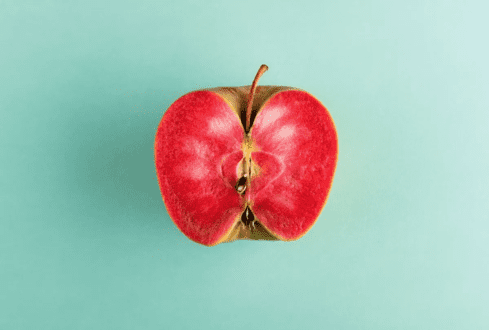Nov 29, 2021Red-fleshed: The science behind an uncommon apple breed
Deep in Oregon’s Hood River Valley, a few select farms grow a rare cultivar of apples that look no different than most conventional varieties on the outside. This apple’s taut skin is an amalgamation of yellow, green and blush pink tints, with minuscule white blemishes adorned all over.
According to a story by Salon, is an independent publication covering news and politics, to an unsuspecting consumer, these delicate apples could easily be mistaken for the commonplace Gala or Braeburn varieties.
But inside, the fruits reveal their deception – their crisp flesh flaunts a striking red hue instead of the typical off-white color marked by most commercial apples. Known as Mountain Rose, Hidden Rose or Airlie Red Flesh apples, these striking apples tout a sugary aroma and an equally saccharine taste with notes of mild tartness. Some say the apples taste like cotton candy, strawberry lemonade, or even fruit punch. Others pick up on its subtle hints of berry and citrus flavors.
Mountain Rose apples – which can only be found in the Pacific Northwest – were first discovered in Airlie, Oregon, more than 60 years ago. Since then, the apples have joined a short list of naturally occurring and red-fleshed varieties spanning across the world. Most of these cultivars, such as the Niedswetzkyana, Almata and Rubaiyat apples, are predominantly found throughout Kazakhstan, Kyrgyzstan and other parts of Central Asia. Collectively, the unique varieties are a scientific phenomenon, curiosities of genetics and horticulture.
The Salon story also reported:
The presence of red flesh in apple cultivars is caused by the MYB10 gene, a localized genetic protein and transcription factor for anthocyanin pathways. Anthocyanins – which are a type of water-soluble polyphenolic pigment – give fruits and vegetables their signature shades of red, purple, blue or black. Consumers are probably familiar with anthocyanins from the produce aisle: purple potatoes and purple cauliflower, for instance, are those colors because of anthocyanins.
In apples, the pigments manifest in the fruit’s skin — and, sometimes, within their flesh. Subsequently, red-fleshed apple cultivars exhibit “very high concentrations of foliar, flower and fruit anthocyanins,” according to a 2012 study published in Plant Biotechnology Journal.
“In the majority of plant species, pigmentation is controlled by the relative amounts of anthocyanins, chlorophyll and carotenoids,” the study further outlined. “These compounds are essential for plant health and performance, but are also considered as phytonutrients or markers for dietary health.”
To view the full Salon story, visit here.















